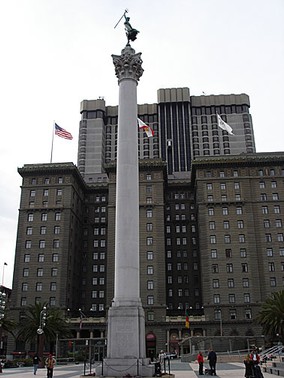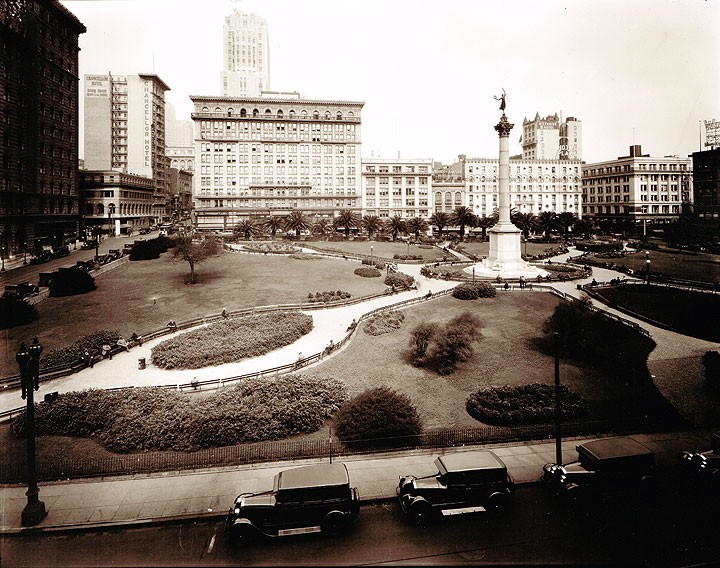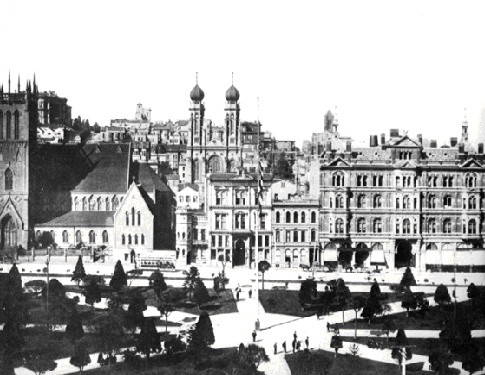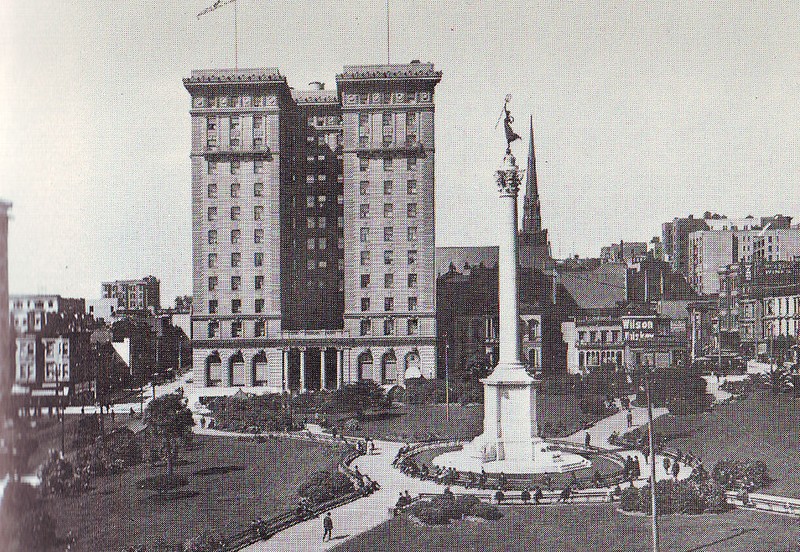Dewey Monument, Union Square
Introduction
Text-to-speech Audio
Images
The Dewey Monument with the St. Francis Hotel in the background

Union Square in the 1920s with the Victoria Monument which commemorates the victory of Admiral George Dewey in 1898.

Union Square in 1875, prior to the construction of the monument

The monument with the St. Francis Hotel in 1904-two years prior to the earthquake

Backstory and Context
Text-to-speech Audio
The city of San Francisco's two public squares were in its original city plan of 1847. This public square became known as Union Square about the time of the Civil War-reportedly owing to pro-Union parades and rallies that occurred at the square. After the 1906 earthquake destroyed much of the city, developers remade Union Square into a shopping district anchored by the reconstructed Hotel Saint Francis which survived the earthquake but had to be completely gutted.
The Spanish American War of 1898 and the Philippine War were milestones in America's expansionist role in the world. Although the U.S. declared victory in the Spanish-American War, Filipino insurgents continued to fight for their independence – this time, against the United States. That conflict – the Philippine-American War – began in 1899 and lasted until the U.S. military quelled the rebellion in 1902. Again, U.S. troops were deployed through the Presidio in San Francisco. Thus, in both the Spanish-American War and the Philippine - American War, military personnel were sent through one former Spanish colony (San Francisco) to fight military personnel in another former Spanish colony (the Philippines).
In the year following the conclusion of the Philippine-American War, the “Dewey Monument”, a collaboration of sculptor Robert Aitken and architect Newton Tharp, was dedicated in San Francisco’s Union Square. The monument commemorates Admiral George Dewey’s defeat of the Spanish in Manilla Bay in the Philippines, and celebrates the American victory in the Spanish-American War.
Sources
History Of Union Square Park. UnionSquarePark. Accessed March 19, 2017. http://www.unionsquarepark.us/HistoryPage.html.
“Bitter Melon” – Reinterpreting the Dewey Monument in Union Square. UsingSFHistory. May 16, 2012. Accessed March 19, 2017. http://usingsfhistory.com/2012/05/16/bitter-melon-reinterpreting-the-dewey-monument-in-union-square/.
